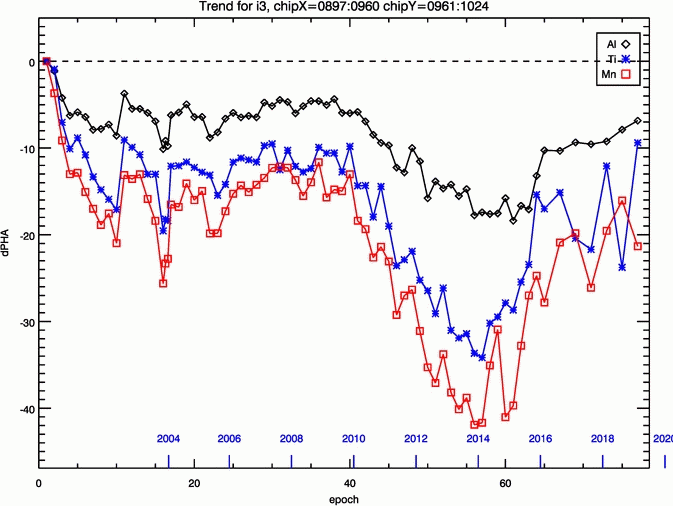CalDB 4.8.4 Public Release Notes
Public Release Date: 30 Aug 2019
SDP Installation Date: 2019-08-28T19:11:22 (UTC)
I. INTRODUCTION
CalDB 4.8.4 is an upgrade to the Chandra CalDB, which includes the following items:
For the CIAO 4.11 / CalDB 4.8.4 release notes see How CalDB 4.8.4 Affects Your Analysis.
II. SUMMARY OF CHANGES
A. ACIS T_GAIN Epochs 77+78
| Location: | $CALDB/data/chandra/acis/t_gain/ |
| Filenames: | acisD2018-11-01t_gainN0005.fits acisD2018-11-01t_gainN0006.fits acisD2019-05-02t_gain_biN0002.fits acisD2019-05-02t_gainN0002.fits |
The ACIS Calibration team has released the semiannual time-dependent gain (T_GAIN) updates from analysis of ECS data for the period Feb 01 through July 31 2019 (epochs 77+78), and hence the above files have been generated as a result, for immediate release. The secular time variations in the corrections calculated from these new data are similar in magnitude and direction to previous upgrades, wherein maximal changes are a few percent or less of the deltaE/E value. This time around, it appears that the gain adjustments near the ACIS-I aimpoint are more significant than those at the ACIS-S aimpoint, and this includes the previous epochal period (epochs 75+76, Aug 01 2018 - Jan 31 2019) which is now finalized.
NOTE: Users with observations taken between (DATE-OBS=) 2018-11-01T00:00:00 and 2019-05-02T12:00:00 are advised to reprocess with their data with finalized versions of the applicable T_GAIN files. Users with observations taken since 2019-05-02T12:00:00 will have access to an updated provisional T_GAIN file (one of the version N0002 filenames above); They will not however have a finalized T_GAIN until after Epochs 79+80 (Aug 01 - Jan 31, 2020) are completed.
For a presentation of the specific values, see the Technical Details Section below. There has been a significant change in the procedure for generating the time-dependent gain corrections from the ECS data, which improves the calibration results, but does not affect users in any other way. For more information on the ACIS time-dependent gain in general, see the ACIS T_GAIN why page.
PIPELINES/TOOLS AFFECTED:
ACIS Level 1 pipeline tool acis_process_events.
CIAO script chandra_repro uses acis_process_events to reprocess ACIS observation data.
THREADS AFFECTED:
Reprocessing Data to Create a New Level=2 Event File
B. HRC-S QEU Version N0012 file set
| Location: | $CALDB/data/chandra/hrc/qeu/ |
| Filenames: | hrcsD1999-07-22qeuN0012.fits hrcsD2000-01-01qeuN0012.fits hrcsD2001-01-01qeuN0012.fits hrcsD2002-01-01qeuN0012.fits hrcsD2003-01-01qeuN0012.fits hrcsD2004-01-01qeuN0012.fits hrcsD2005-01-01qeuN0012.fits hrcsD2006-01-01qeuN0012.fits hrcsD2007-01-01qeuN0012.fits hrcsD2008-01-01qeuN0012.fits hrcsD2009-01-01qeuN0012.fits hrcsD2009-08-08qeuN0012.fits hrcsD2010-09-14qeuN0012.fits hrcsD2012-03-29qeuN0012.fits hrcsD2012-10-05qeuN0012.fits hrcsD2013-09-21qeuN0012.fits hrcsD2015-02-17qeuN0012.fits hrcsD2016-02-22qeuN0012.fits hrcsD2016-07-28qeuN0012.fits hrcsD2017-01-23qeuN0012.fits hrcsD2017-06-05qeuN0012.fits hrcsD2017-09-26qeuN0012.fits hrcsD2018-01-19qeuN0012.fits hrcsD2018-05-27qeuN0012.fits hrcsD2018-09-26qeuN0012.fits hrcsD2019-02-24qeuN0012.fits |
As the LETGS calibration team has monitored the accelerated rate of decay in the HRC-S quantum efficiency as a function of wavelength, they have elected to replace the current set of time dependent QE Uniformity (QEU) files (version N0011) with another new set of files, version N0012. One additional file has been added to the set, with new effective date of 2019-02-24T00:00:00, so that the set includes 26 files now. The only other notable change is that the post HV-change (2012-04 and later) wavelength- independent QE decline has been updated from 2.51 to 2.55%/yr for zeroth order, and from 2.34 to 2.38%/yr for dispersed orders. See the technical details section below for illustrations and details of the derivation of these new QE Uniformity corrections.
See also the why page for more general information on the HRC-S QE/QEU corrections in the CalDB.
CIAO SCRIPTS/TOOLS AFFECTED:
See the script fluximage, which uses mkinstmap
THREADS AFFECTED:
For exposure-corrected imaging analysis with HRC-S, see the thread:
For grating spectroscopy with the LETG/HRC-S, see the thread:
C. HRC-I/S RMFs Version N0002
| Location: | $CALDB/data/chandra/hrc/rmf/ |
| Filenames: | hrciD1999-07-22samprmfN0002.fits hrcsD1999-07-22samprmfN0002.fits |
This is only a structural update. No change has been made to the response matrix curves themselves, but only the photon energy array grid and energy scale mapping has been changed.
- The photon energies at which the RMF matrix is defined is now at a finer grid. The HRC-I grid uses an LETG-like constant wavelength separation grid of 0.0125 Ang at low energies and a constant energy separation grid of 0.01 keV at high energies. The HRC-S grid used to have a locally variable gridding loosely following constant wavelength separation grid, and is now fixed to a constant wavelength separation grid of 0.0125 Ang throughout. This correction is necessary in order to compute model fluxes correctly, as coarse binning would miss edge structure features present in the ARFs and generate biased estimates of expected counts.
- The EBOUNDS extension, which maps the channel number to a representative energy for plotting purposes is made to match the Chandra pass band. Note that the assignment of energy values to a given PI value in the HRC is meaningless, so this change is done only for convenience and to minimize inadvertent errors by users. Users should continue to use set_analysis("channel") in the Sherpa environment when analyzing HRC PI spectra. However, now PI channels [1,30,45,300,1024] map to [0.06,0.2,0.3,8.0,10.0] keV in piecewise linear fashion.
See the HRC RMFs why page for information and suggestions for proper use of the HRC RMFs for hardness ratio estimates, or quantile color-color diagram (QCCD) analysis.
PIPELINES/TOOLS AFFECTED:
NONE.
THREADS AFFECTED:
While there are no threads for using the HRC RMFs for hardness ration analysis, there is a demonstration of the use of the RMFs for computing QCCDs in the HRC chapter of the POG. See POG Section 7.6: Non-Dispersive Energy Resolution.
III. TECHNICAL DETAILS
A. ACIS T_GAIN Epochs 77+78
The ACIS T_GAIN epoch 77+78, combining two quarterly epochs, and covering the period of Feb 01 through July 31, 2019 has recently been completed, and the ACIS External Calibration Source (ECS) radiation zone data has been reduced as per a significanly modified procedure, to generate the time-dependent gain correction tables for this period. The procedural modifications were made to address the decreasing statistics available from the ECS due to its natural decay in count rates. The two epochs are being combined, as is now the standard practice with T_GAIN upgrades, to produce a single new T_GAIN correction update.
The original method of derivation for the ACIS T_GAINs is given in the memorandum "Corrections for time-dependence of ACIS gain", posted on ACIS Calibration web page ACIS TGAIN.
The magnitudes (in eV) of the new gain corrections, versus photon energy, are given in Figs. 1-3 below. The secular variations are as follows: Specifically for the ACIS-I aimpoint over 0.06-4 keV there is a +5 correction ; for the ACIS-S aim point, the variations are approximately ≤ (+)2% for the full range. Fig. 1 below gives the corrections for the ACIS-I aimpoint on chip ACIS-3, for the CTI-corrected case, which is the only one applicable to FI chips. Figure 2 gives the corrections for the ACIS-S aimpoint on ACIS-7, for the case where the BI chips are CTI-corrected. Finally Fig. 3 gives the corrections for ACIS-7 for NON-CTI-corrected BI chips. These would be relevant to GRADED DATAMODE observations with ACIS-S, for example.
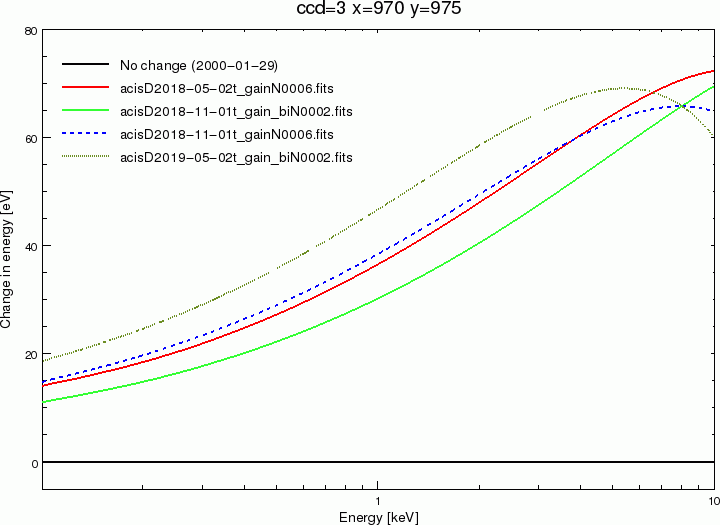
Fig. 1: Time dependent gain corrections versus photon energy for the ACIS-I aimpoint on ACIS-I3
(CHIPX=970, CHIPY=975) for the new and recent comparable T_GAIN files in CalDB. The parallel CTI
correction for the FI chips has been applied to all data.

Fig. 2: Time-dependent gain corrections versus energy for the ACIS-S aimpoint on ACIS-7
(CHIPX=210, CHIPY=520) for the new and recent comparable CalDB T_GAIN files. For these data,
the series and parallel CTI correction for the BI chips has been applied.
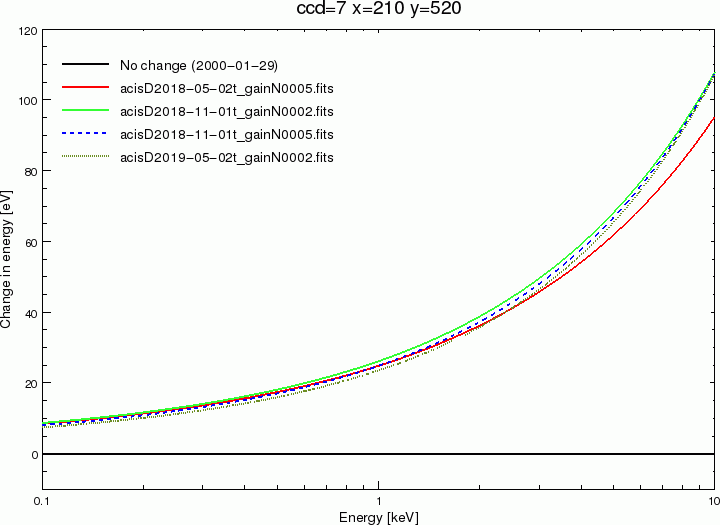
Fig. 3: T_GAIN correctons versus energy for the ACIS-S aimpoint on ACIS-7, this time with
no CTI correction applied to the data, as would be the case for GRADED DATAMODE observations.
Long term trends for chips I3 and S3 are plotted below in Figures 4a and b, through Epoch 77+78, which includes the latest release. The chip locations for these plots are given in the respective labels above the plots. The chip locations selected are near the aimpoints, as with Figs 1 and 2 above. The full CTI correction has been applied to the data in both figures.
B. HRC-S QEU Version N0012 file set
Since roughly the beginning of 2017, due to evolution of the HRC-S gain, (tg_lam,pi) background filtering has been rejecting an increasing proportion of valid longest-wavelength positive order events. Gain and PI filter recalibration are priorities and will be revisited soon. Meanwhile, until now the QEU has been calibrated to such filtered spectra, but beginning with the N0011 release, unfiltered spectra will be used instead.
This HRC-S QEU N0012 update incorporates the latest HZ 43 LETG calibration observations into the analysis. Using these most recent data, the post HV-change (2012-04 and later) wavelength-independent linear QE decline has been revised from 2.51%/yr to 2.55%/yr for 0th order, and from 2.34%/yr to 2.38%/yr for dispersed orders. The figures below also show what additional empirical wavelength-dependent dispersed order corrections are required to match the HZ 43 fiducial WD model.
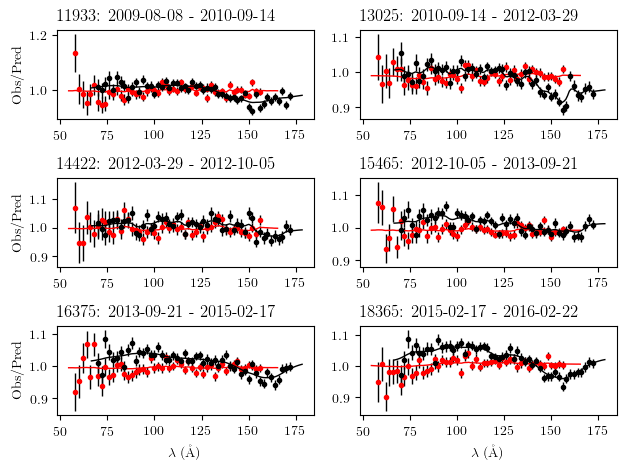

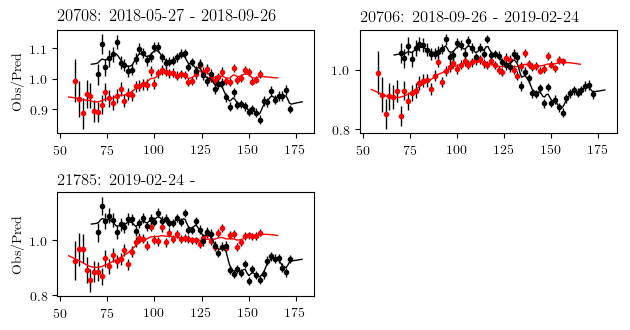
Fig. 5: The residual wavelength-dependent continuous autoregressive moving average model correction for
each epoch's QEU CalDB file, after the linear temporal wavelength-independent QE decline has been applied.
Red curves are negative dispersed orders, black are positive orders.
